Two new studies have possibly identified regions on the Moon’s surface that could contain pieces of the lunar mantle, which would be possible sample targets for the Artemis mission. Plus, Venus gets a double flyby next week, and it’s all about asteroids and meteor showers in this week’s What’s Up.
Podcast
Transcript
Hello and welcome to the Daily Space. I am your host Dr. Pamela Gay, and I am here to put science in your brain.
The universe is full of awesome, destructive things that are awesome because they are far enough away. For instance, Stars explode. And when they explode, sometimes, they explode into pieces.
I honestly didn’t know that before today. I thought they just exploded into a cloud of gas and energy.
It turns out that sometimes when white dwarfs explode, they don’t explode completely.

A new paper in The Astrophysical Journal Letters, led by JJ Hermes, is titled (and I love this title) “8.9 hr Rotation in the Partly Burnt Runaway Stellar Remnant LP 40-365″. In this paper, researchers describe a literal partly burnt runaway stellar remnant.
White dwarfs are the leftover cores of stars like our Sun that have died. They exhale their atmospheres, and what is left collapses down into a dense blob of material that is no longer capable of having nuclear reactions. These aren’t entirely stable dense blobs. If you pile too much mass on them or if they gravitationally steal material off another star, they can end up with more material them they can structurally support, and things just go boom.
When one particular white dwarf did this, a chunk flew off, and that chunk is now called LP 40-365, and it was flung with enough speed that it is now on its way out of the galaxy with a colossal speed of two million miles per hour. This chunk isn’t massive enough to collapse back into a white dwarf and instead is a super weird star. As described by a student on this project, Odelia Putterman: To have gone through partial detonation and still survive is very cool and unique, and it’s only in the last few years that we’ve started to think this kind of star could exist.
Having found one weirdo high-speed shrapnel star, this team went looking for more, and they found them. And I can’t wait to hear more about this kind of high-speed object. As Hermes says: These are very weird stars, what we’re seeing are the by-products of violent nuclear reactions that happen when a star blows itself up.
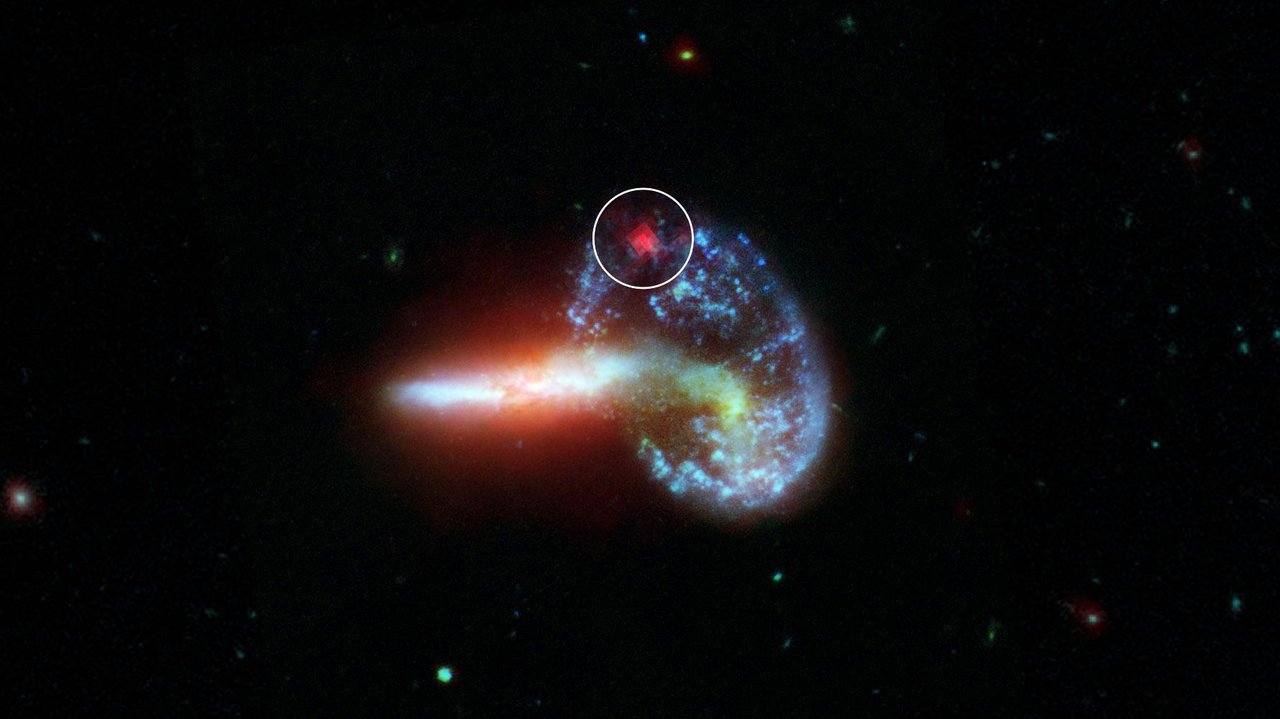
The fact that stars explode is kind of awesome, and lots of astronomers, both backyard and professional, spend a lot of time peering at galaxy after galaxy looking for things that flare-up in the night. On average, a galaxy like ours should have one star explode per century, and that means that if you look at 100 galaxies per year, you should see one explosion. If you look at 100 stars a night for a year, you’re going to statistically find a whole lot of explosions.
But sometimes we don’t. There hasn’t been a good supernova in our galaxy since Johannes Kepler’s time. It appears that this may not so much be a lack of exploding stars issue as a lack of visible exploding stars issue.
Some stars just like to explode in the privacy of dust clouds. A new study using data from the retired Spitzer Space Telescope was able to find the warm glow of five supernovae that weren’t visible to telescopes that image things in the same colors our eyes see. They only looked at forty dusty galaxies, and these five supernovae out of forty galaxies was a high enough number to explain why there are so many galaxies that don’t have visible light supernovae and tells us our past estimates on numbers of supernovae were actually pretty good.
So the sky is full of exploding stars, and sometimes they fling out chunks at two million miles per hour, and sometimes they explode where we can’t see them. That’s not scary or anything. Actually, it’s not. The Universe is big, and we aren’t in danger, and it’s kind of awesome that we can understand our universe.
While understanding the universe is fantastic, it’s also great to understand our own solar system. There are still mysteries to be solved closer to home, and one of those is why Jupiter is so dang hot. Not just “oh the upper atmosphere is a little warmer than expected” kind of hot, either.
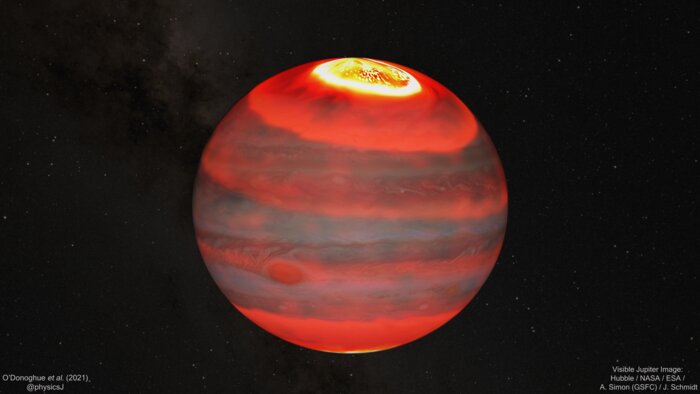
We know how much sunlight Jupiter receives based on its location, and the upper atmosphere should come in at about a brisk minus 70 degrees Celsius. Instead, that temperature is an immensely hot 425 degrees Celsius. This mystery has been frustrating planetary scientists for fifty years, and now we finally have the answer. James O’Donoghue, lead author of a new paper in Nature, explains: We found that Jupiter’s intense aurora, the most powerful in the solar system, is responsible for heating the entire planet’s upper atmosphere to surprisingly high temperatures.
You probably know what an aurora is based on the ones we have here on Earth. They occur when charged particles smack up against our magnetic field. The particles get caught up in the field and spiral along the field lines toward the poles, so we get the aurora Borealis and Australis – pretty lights that dazzle in the night sky. On Jupiter, these aurorae are supercharged with, as we learned recently, electrically charged particles coming from the material erupting on Io. Those particles are swept up by the solar winds and create enormous aurorae which are big enough and hot enough, it turns out, to heat the rest of Jupiter as well.
Per the press release: Global models of Jupiter’s upper atmosphere suggested that winds heated by the aurora and headed to the equator would be overwhelmed and redirected by westward winds driven by the planet’s rapid rotation. This would prevent the auroral energy from escaping the polar regions and heating the whole atmosphere. However, this new observational result suggests that such trapping is not occurring and that the westward winds may be relatively weaker than expected compared with equatorward winds.
We’ll have links to the incredible graphics for this story on our website, DailySpace.org.
Jupiter is not the only planet getting hit by tiny particles. Mercury is getting bombarded by meteorites, much more so than our own Moon.
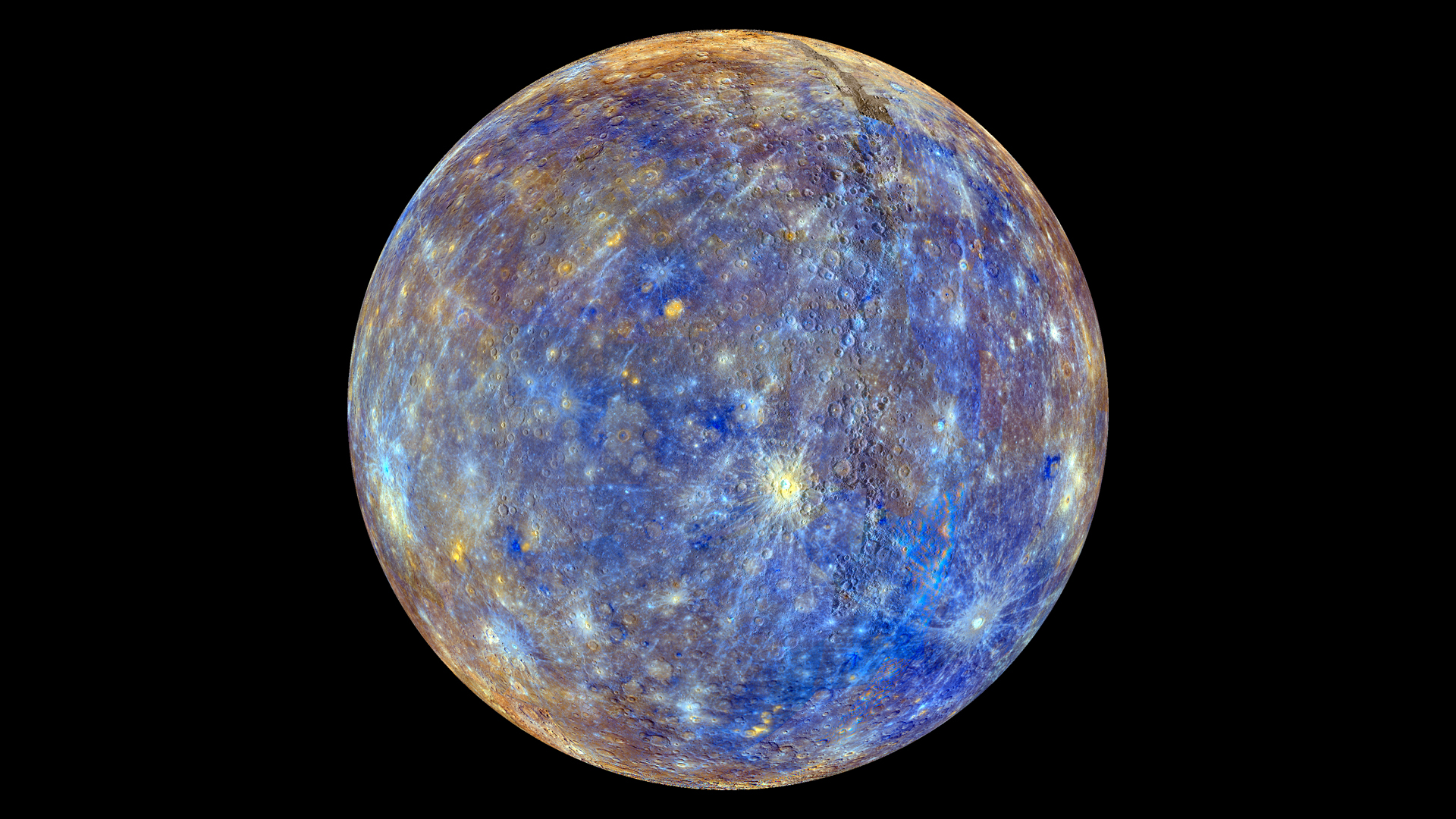
Scientists used images taken by the Messenger spacecraft to examine the surface to try and understand why there are so few large boulders. Here’s the funny part of the story: they wanted to compare the images from Messenger with images taken of the Moon by the Lunar Reconnaissance Orbiter (LRO). Now, Messenger’s images can resolve boulders at about five meters in diameter or larger. The LRO, on the other hand, has a way higher resolution, so the team had to “deteriorate” the LRO images to match the quality of the Messenger images.
Not surprisingly, Mercury receives over fifty times the micrometeoroid flow that the Moon gets, as a result of being closer to the Sun, whose gravity pulls everything in and hits Mercury. The particles are even coming in at a faster rate thanks to the Sun’s immense gravity, and those particles are beating up the boulders on the surface like sandpaper on wood, wearing them down far more quickly than the rocks on the Moon are worn down. Plus, the huge amount of particle flow has also led to a thicker regolith layer on Mercury, which means larger meteors are not displacing rocks and creating big boulders to start with. So Mercury has fewer boulders compared to the Moon because it starts with fewer and they’re worn down more quickly. This work is published in the journal Icarus.
Okay. Instead of talking about things coming down to hit the surface, let’s talk about things going up to disrupt the surface. In a new paper published in the journal Geology, scientists looked at how subducted sediment rose back up from deep in the crust to end up on the surface in California’s Mojave Desert and in Arizona. The best way to describe the process is like a lava lamp.

For those of you who didn’t experience any part of the seventies or haven’t paid attention to the resurgence of these popular items, here’s how they work. You take a rather plastic substance, something nice and stretchy like wax, and you add it to a liquid. Then you put a hot lamp at the bottom which heats the liquid and the plastic, but not at the same temperature because of the difference in density. The plastic heats and rises, stretching into blobs. As it bobs up, it begins to cool and drop back down, creating an ever-changing system of shapes, moving up and down. It’s mesmerizing, really. Beth has one on the dining room table, and they frequently get distracted by watching it.
Well, it turns out that something similar happened to subducted sand and mud about 75 million years ago off of the coast of California. Lead author Jay Chapman explains: The rocks started their lives as sediment eroded from the Sierra Nevada Mountains and carried by rivers and streams down to the ocean, where they ended up deposited in a subduction trench, similar to the modern-day Marianas trench. Then, they were carried about 20 miles deep into the Earth by a subducting oceanic plate, where the sediments were metamorphosed into a rock called schist. That in and of itself is pretty amazing, but the truly special thing about these rocks is that they didn’t stay subducted, but somehow made their way back up to the surface, where you can go stand on them today.
Like the lava lamp, the bits of sediment were heated by the mantle and rose up to attach to the bottom of the crust in blobs. Add in some time and weathering, and voila, you can now stand on once-subducted rocks. Geology is amazing.

One of NASA’s big goals at the moment is a return to the Moon by humans and robots. We scientists are always asking for robots.
While there are certain fairly obvious places to go, like the probably water-rich South Aiken Basin, there are some science-rich places that we are also looking for. Ideally, geologists want to find places where mantle and other rocks that formed deep in the Moon have been brought up to the surface where they can be retrieved for study.
In a new paper in Nature Communications, data from the LRO has been analyzed to look for the kinds of materials associated with the lunar interior, and those minerals have been found.
And conveniently, like the water we need, the science we want is located near the South Aiken Basin. This massive impact structure has areas of permanent shadow and areas where the material was lifted up through the impact. In the northwest corner of this region, there is a region with a weird composition that this new research finds is consistent with it being, and I quote the NASA release here, “’sludge’ that forms in the uppermost mantle at the very end of magma ocean crystallization.” Put another way, the liquid rock that once formed the Moon’s interior mantle cooled and crystallized over time, and this particular anomaly is likely the stuff that cooled off last.
And that is kind of cool. And now you know, now NASA knows, and now all of us wait until someone can go collect a sample to play with in a lab.
Lunar scientists are pretty lucky. LRO is currently in orbit nabbing awesome data, and over the decades, we’ve had many missions in orbit around this super nearby world.
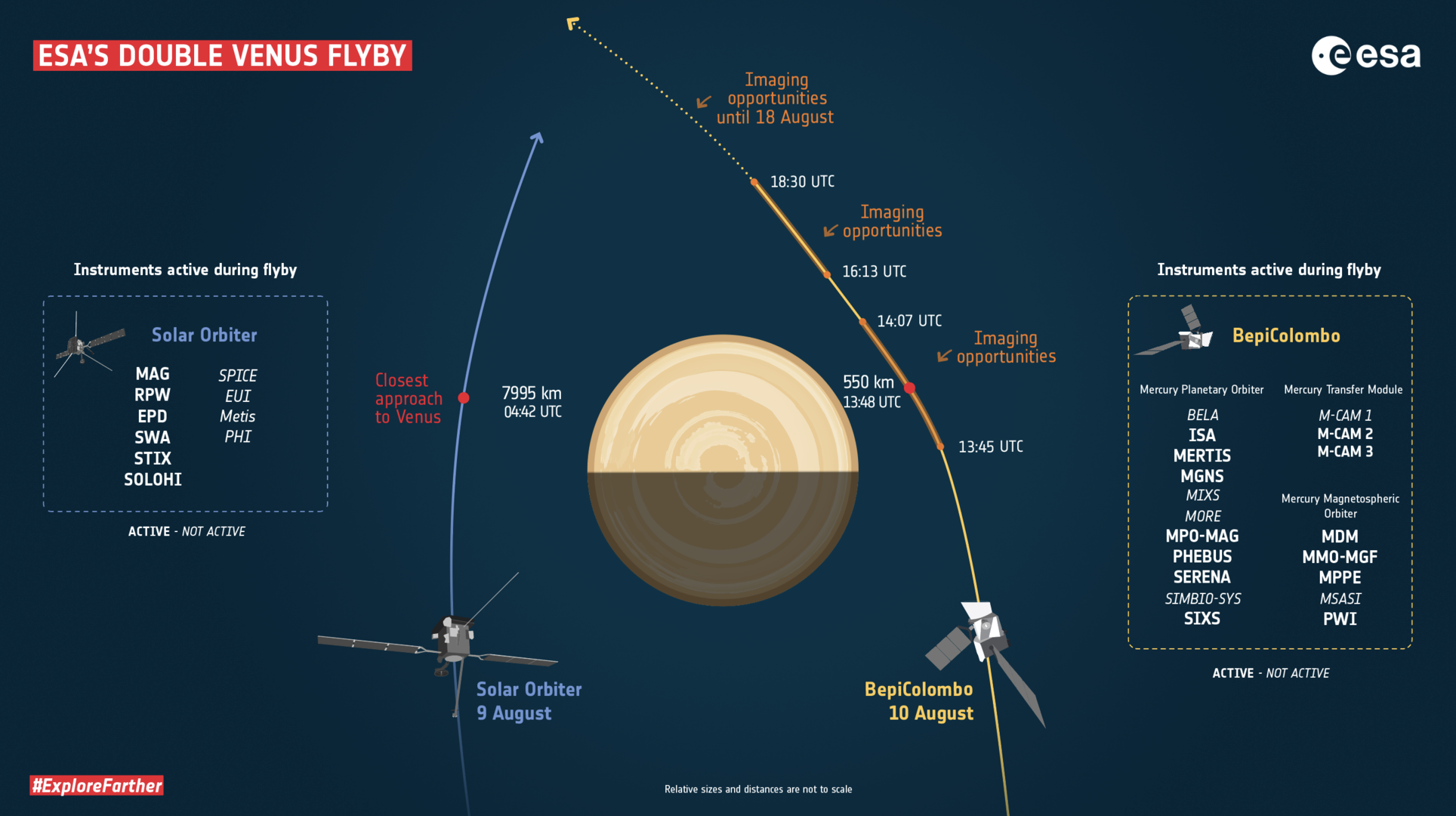
Venus, however, is not that lucky, and researchers will go to great extremes to sneak a look whenever they can with whatever they can. This means that Venus is a favorite destination for spacecraft that need a gravitational assist. While mission planners can steal a bit of momentum from Venus – an amount so small it is basically unaffected while the tiny spacecraft can get a nice dose of velocity – scientists can use Venus as a place to test the mission instruments and get information we otherwise would never have.
Both the Solar Orbiter, which, as the name suggests, studies the Sun, and the BepiColombo mission to Mercury are going to fly past Venus this week on August 9 and 10. Solar Orbiter is using Venus to sling itself into a polar orbit and BepiColombo is working to drop its orbit closer to the Sun, while trying to stay out of the Sun. Neither mission is set up to get particularly pretty images of Venus, but data is data, and beggars can’t always be choosers. I can’t wait to see what we learn and hope to bring you some of the low-resolution images we expect toward the end of next week.
What’s Up
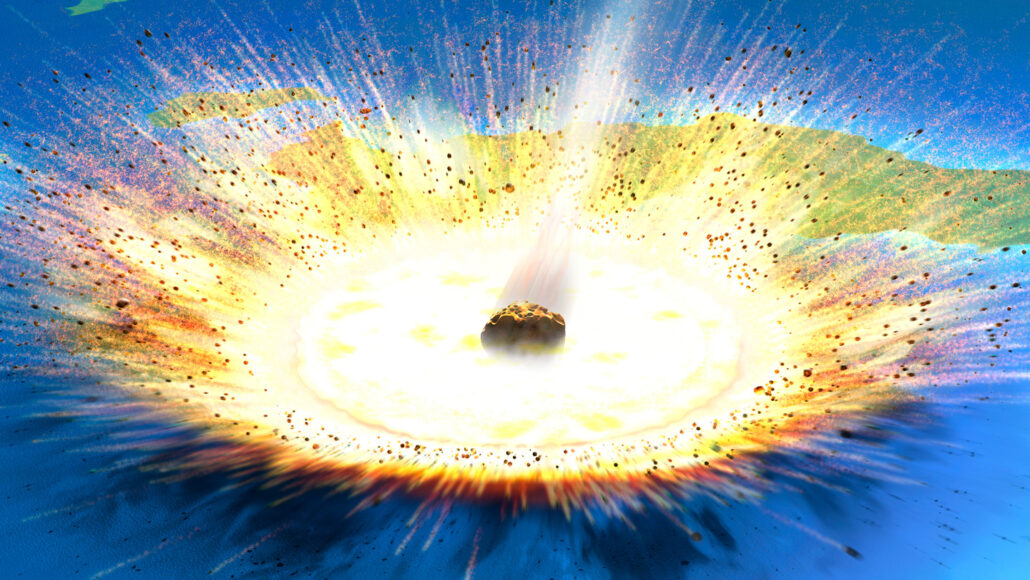
I’ve said it before, and I’ll say it again: I loved dinosaurs and space as a kid, and since it was an asteroid that killed the dinosaurs, space won, and now I’m an astronomer. And today, we have a new story about that dino-destroying asteroid. As described by Nikk Ogasa in Science News: A series of ridgelike structures more than three stories high and spaced nearly two Eiffel Towers apart appear to be buried about 1,500 meters beneath central Louisiana.
These buried megaripples are located in just the right place to have been formed at the moment of the dinosaurs’ demise. These ripples were found by geologists doing an ultrasound of the Earth to look for coal. The geologist in question, Kaare Egedahl, was studying at the University of Louisiana at Lafayette and shared his discovery with Gary Kinsland. Together, they and their colleagues were able to piece together from the spacing and orientation of these ridges that they were likely formed as wave after wave from the asteroid-induced tsunami swept through the ocean that covered what is now Louisiana.
A similar structure was formed off the coast of Japan by the 2011 earthquake and tsunami, just a whole lot smaller.
These structures were able to survive the following extinction-related storms and other horrors because of their depth and now are part of the layers of our planet… part of the most interesting layers.
It has to be acknowledged that there are some researchers saying the impact that killed the dinosaurs shouldn’t have created something this mundane. Some researchers are claiming that the impact would have been so chaotic that these structures couldn’t have settled out so gracefully, but I’m with the research team on this one. They are aligned correctly, spaced correctly, and really appear to be remnants of one of the worst days of our planet’s existence. And, in a dark and twisted way, this is really awesome science.
The possibility of death heading at us from the sky is a very real one, and sometimes we get a reminder while just enjoying the stars. Earlier this year, a web camera for stargazing was installed on the Subaru Telescope in Hawai’i, and on July 14, viewers were able to see more than a dozen bright meteors streak through its field of view in just ten seconds!
Clusters of bright meteors aren’t normal, not even during meteor showers, and this kind of light display is most likely associated with a broken-up space rock that had all of its pieces still pretty close together so that they hit the atmosphere as a pack. Discovery of these events is rare; you really have to have someone in just the right part of the world looking in just the right direction at the right time. It’s going to be interesting to see how many more of these clusters are detected.
Let’s hope no big clusters ever approach. The reason you don’t want to shatter an incoming asteroid is that that means more of our planet will get impacted as each chunk hits a new place on our rotating planet.
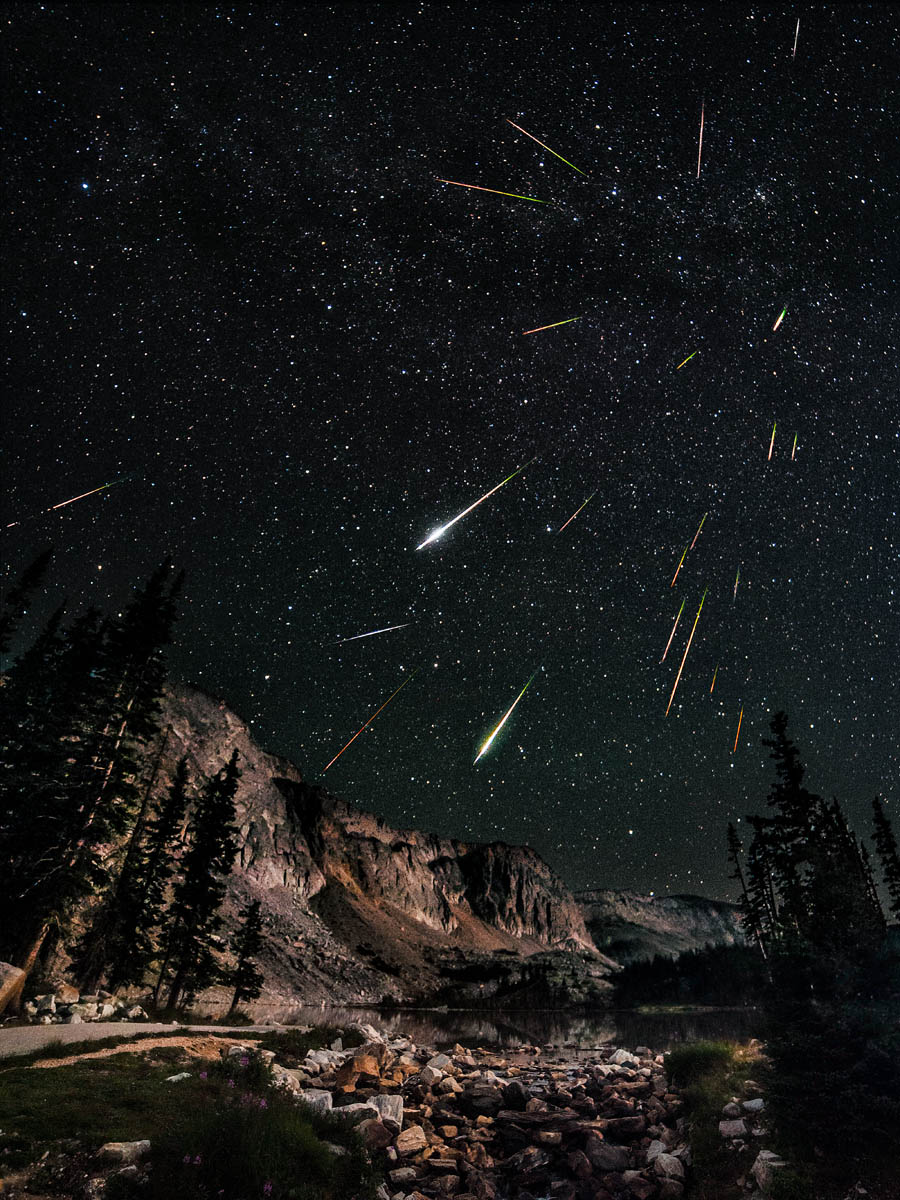
Now, I want to be clear: there are no known objects that are hazardous to our planet. None. As far as we know, we are safe. We have a whole lot of scopes and people out there monitoring the skies, and new systems are being developed all the time to keep a better and better eye on what might be coming our way.
This means you can safely enjoy a sky full of shooting stars. That phrase – shooting stars – actually describes the amazing light show we see when pebbles and other small objects or particles burn up in the Earth’s atmosphere.
Every August, our planet passes through the trail of debris left behind by Comet Swift Tuttle, and the point in the sky that intersects those cometary leftovers matches up with the constellation Perseus. This year, the Moon won’t be interfering, and it’s possible to see up to forty meteors an hour on the night that spans from August 11 in the evening to August 12 in the morning.
Meteor showers are best seen between midnight and dawn, and all you need is a blanket, lawn chair, or hammock to lay down in as you look up and watch the sky. We also recommend bug repellant for those of you with bugs. And if you can’t see the sky well, you can also listen for meteors. Find an old-school radio and tune it to the static between stations. You will periodically hear pops and whistles as meteors reflect back radio signals at new frequencies.
Start planning now, and get outside or get a radio or both. Once again, the Perseids peak before dawn on Thursday, August 12.
Until then, this has been the Daily Space.
Learn More
Stellar Shrapnel Flying Out of Galaxy
- Boston University press release
- “8.9 hr Rotation in the Partly Burnt Runaway Stellar Remnant LP 40-365 (GD 492),” J. J. Hermes et al., 2021 June 7, The Astrophysical Journal Letters
Exploding Stars Sometimes Go Unnoticed
- NASA JPL press release
- “A Spitzer survey for dust-obscured supernovae,” Ori D Fox et al., 2021 June 21, Monthly Notices of the Royal Astronomical Society
Jupiter Being Heated by Extremely Large, Hot Aurorae
- Keck Observatory press release
- “Global upper-atmospheric heating on Jupiter by the polar aurorae,” J. O’Donoghue et al., 2021 August 4, Nature
Mercury Has Fewer Large Boulders Than the Moon
- Ural Federal University press release
- “Boulders on Mercury,” Mikhail A. Kreslavsky, Anastasia Yu. Zharkova, James W. Head, and Maria I. Gritsevich, 2021 July 20, Icarus
Once Subducted Rocks Rise Up Like Wax in Lava Lamps
- University of Wyoming press release
- “Diapiric relamination of the Orocopia Schist (southwestern U.S.) during low-angle subduction,” James B. Chapman, 2021 April 22, Geology
New Sites for Lunar Exploration Flagged
- NASA Goddard press release
- “Evidence for a Stratified Upper Mantle Preserved Within the South Pole-Aitken Basin,” D. P. Moriarty III et al., 2020 December 8, JGR Planets
- “The search for lunar mantle rocks exposed on the surface of the Moon,” Daniel P. Moriarty III et al., 2021 August 3, Nature
Venus to be Viewed by Two Non-Venus Missions
- ESA press release
Dinosaur-Destroying Asteroid Wrecked Louisiana
- Dinosaur-killing asteroid may have made Earth’s largest ripple marks (Science News)
- “Chicxulub impact tsunami megaripples in the subsurface of Louisiana: Imaged in petroleum industry seismic data,” Gary L. Kinsland, Kaare Egedahl, Martell Albert Strong, and Robert Ivy, 2021 September 15, Earth and Planetary Science Letters
Cluster of Meteors Spotted Over Hawai’i
- Subaru Telescope press release
- University of Hawai’i press release
What’s Up: The Perseids Fall August 11-12
- Perseid Meteor Shower 2021: All You Need To Know (EarthSky)
- Perseid meteor shower 2021: how to watch (Planetary Society)
- How to see the Perseid meteor shower (Royal Museums Greenwich)
Credits
Written by Pamela Gay and Beth Johnson
Hosted by Pamela Gay
Audio and Video Editing by Ally Pelphrey
Content Editing by Beth Johnson
Intro and Outro music by Kevin MacLeod, https://incompetech.com/music/


 We record most shows live, on Twitch. Follow us today to get alerts when we go live.
We record most shows live, on Twitch. Follow us today to get alerts when we go live.